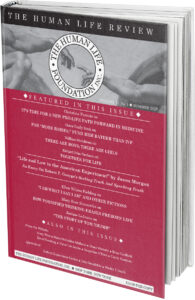Kaleidoscope Hope – Orderliness Emerging from Chaos
The charm of the toy kaleidoscope from ancient childhood was seeing order come out of chaos. Holding the cylinder to our eye, we would give it a twist; then free-floating pieces, falling randomly, would be reflected by a series of mirrors, transforming randomness into symmetrical patterns. We would introduce chaos, but it would always reassemble in orderliness. Sure, it was an optical illusion, but there was something reassuring in the unifying action of the kaleidoscope.
Our minds hunt for pattern and orderliness, looking for Waldo in a sea of chaos. Pattern recognition is the most basic brain function when processing sensory stimuli. We focus on the orderliness we recognize; conversely, we puzzle over what doesn’t fit against a background of the recognizable. And this isn’t just true about sensory perception. It is also true about meaning. We need a comprehensible whole—a ground of meaning beneath our mental feet so that we can assess situations as they arise. We need stable, reliable truths from which we can further make sense of things. These stable truths derive from natural givens, such as gravity, and from culturally conditioned artifacts like language and music, art and architecture, customs and laws, prejudices and attitudes. This second category of truths is not fixed in the way the law of gravity is fixed, but in a healthy culture it is pretty stable.
The Overton Window is defined by Wikipedia as “the range of ideas tolerated in public discourse.” It used to be merely a helpful concept, because it implied that certain ideas might be in frame or out of frame. Not everything conceivable was worthy of serious consideration. But now the notion of the Overton Window is indispensable, because it reveals the destabilization of our world. When society was more stable, the Overton Window looked out on a fixed landscape of ideas acceptable for public consumption. Now, it is like a window looking out from a bullet train, racing faster and faster down the tracks.
Things which were once considered immutable constants; that John was a man and Mary a woman, are now conditional, dependent upon the existential positing of the subject. Maybe today Mary identifies herself as a man. Maybe John identifies himself as a little girl. Today, this kind of gender mayhem is not just tolerated, it is celebrated. Madness is a sign of emancipation. And while it is still permissible for a person made up of XY chromosomes to describe himself as a man, the “cis gender-normative worldview” is quickly moving out of frame. In fact, it is already being stigmatized. We must nod approvingly at the self-righteous posturing of the transgressive, then look down and hang our heads, having internalized the scarlet letter of the vanquished oppressor. On the horizon is a landscape in which those with XY chromosomes must all-out renounce their cis-gender identities. Our bullet train seems headed there and it has no brakes.
Nature and Truth have been cast as artifacts of an oppressive colonialist past. Zygmunt Bauman coined the term “liquid modernity” to describe the shape-dissolving speed of social change in late modernity. Probably the most prescient quote summarizing the phenomenon of liquid modernity came from President Bill Clinton, a generation ago, when he slipped through the fingers of a grand jury investigation with: “It depends on what the meaning of the word ‘is’ is.” Our whole culture, but especially those who retain a sense of the fragility of civilization, feel increasing anxiety. What are we to do? What barricade should we man? What kind of weapons should we brandish? Or should we hide? Rod Dreher has proposed what he calls the Benedict Option, the formation of deep faith communities within which we might retain the pearls of Christendom through the coming Dark Ages. His book came out a year ago, and enjoyed quite a bit of attention. It is no longer on the bestseller list, but in one way or another, everyone I know is still thinking about it.
But maybe our situation is not as bad as we fear it might be. The insane free-fall of liquid modernity is dizzying, and in response increasing numbers of people are hitting the Stop button. In the last two years there has been a remarkable change among my students. Growing numbers are devout followers of Jordan Peterson, Ben Shapiro, and Steven Crowder. And they are emboldened. It has become edgy and gutsy to be an articulate conservative. This past week, things hit a fevered pitch. The majority of students, who routinely mouth spoon-fed mainstream media truisms, were predictably aghast at draconian heartbeat legislation that will deny women bodily autonomy. But this time increasing numbers of newly minted conservatives spoke up, and grounded the discussion by describing what actually takes place when a baby is aborted.
The madness of our age is casting a darkness that makes flickering candles all the brighter; and, we can’t help it, we are all attracted to the light. The Truth will out. Orderliness will rise from chaos because it is orderliness we seek. No one would remember a kaleidoscope from childhood that settled into the randomness of a Jackson Pollack painting. Only a university-educated nihilist could find consolation in the chaos of a Pollack canvas, perhaps because misery loves company. But most of us don’t love misery. We love health and wholeness and orderliness—and meaning.
Growing numbers of us are rousing from the sickly stupor of our age.









